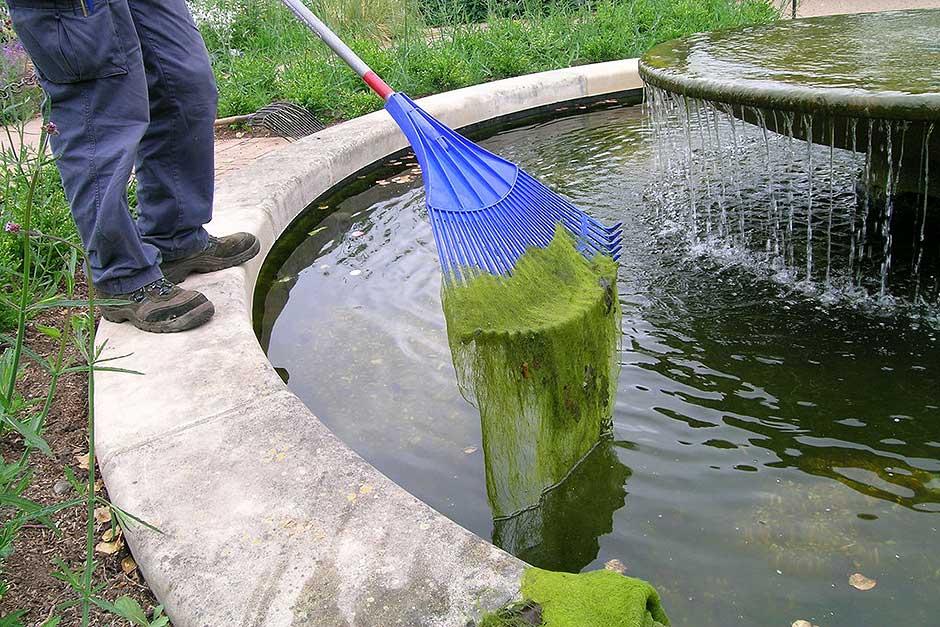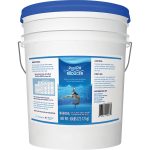Having a pond in your backyard can be a beautiful addition to your landscape. However, one common issue that pond owners face is the presence of green algae. Green algae can make your pond water look unattractive and can also be harmful to the aquatic life in the pond. In this blog post, we will discuss effective methods to remove green algae from a pond and how to prevent it from coming back.
1. Manual Removal
One of the simplest ways to remove green algae from a pond is through manual removal. You can use a pond net or a rake to skim the algae off the surface of the water. This method is effective for smaller ponds with a manageable amount of algae. Regularly skimming the surface of the pond can help prevent algae from spreading and taking over the pond.
2. Beneficial Bacteria
Introducing beneficial bacteria to your pond can help control green algae growth. These bacteria compete with algae for nutrients, thereby reducing the algae population. You can find beneficial bacteria products specifically designed for ponds at your local garden center. Follow the instructions on the product for the best results.
3. Barley Straw
Barley straw is a natural and effective way to control green algae in ponds. When barley straw decomposes in water, it releases compounds that inhibit algae growth. You can place barley straw bales in your pond or use barley straw extract. This method is environmentally friendly and safe for fish and other aquatic life.
4. Pond Aeration
Poor water circulation and lack of oxygen can contribute to algae growth in ponds. Installing a pond aerator can help improve water quality and reduce algae blooms. Aeration systems come in various types, including fountains, bubblers, and diffusers. Proper aeration can create a healthier environment for aquatic plants and fish while inhibiting algae growth.

Credit: www.thepondguy.com

Credit: www.rhs.org.uk
5. UV Clarifiers
UV clarifiers are effective tools for controlling green algae in ponds. These devices use ultraviolet light to kill algae cells and prevent them from reproducing. UV clarifiers are easy to install and maintain, making them a popular choice among pond owners. Place the UV clarifier in your pond’s filtration system for optimal results.
6. Chemical Treatments
As a last resort, you can consider using chemical treatments to remove green algae from your pond. Algaecides are chemicals designed to kill algae, but they should be used with caution. Follow the instructions carefully, and be aware that some algaecides can harm fish and other aquatic life. Consider consulting with a professional before using chemical treatments in your pond.
7. Shading
Green algae thrive in sunlight, so providing shade for your pond can help reduce algae growth. Planting trees or installing shade sails can help block sunlight and create a cooler environment in the pond. Consider adding floating plants like water lilies, water hyacinth, or duckweed to provide natural shade and improve water quality.
8. Regular Maintenance
Preventing green algae growth in your pond requires regular maintenance. Keep debris and organic matter out of the pond, as they can contribute to nutrient buildup that fuels algae growth. Test the water quality regularly and make adjustments as needed to create a balanced ecosystem in your pond.
Conclusion
Green algae can be a nuisance in ponds, but with the right techniques and maintenance, you can keep it under control. Whether you opt for manual removal, beneficial bacteria, natural remedies like barley straw, or technological solutions like UV clarifiers, there are various methods to combat green algae in ponds. Remember to practice regular maintenance and monitor the water quality to prevent algae from returning.
By following these tips and implementing the right strategies, you can enjoy a clean and healthy pond that is free from green algae.





